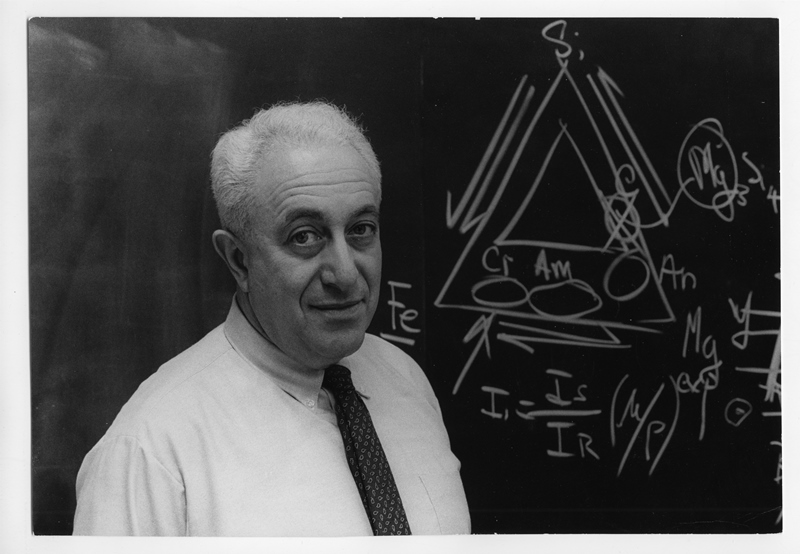The History of Mesothelioma
A significant moment in the history of mesothelioma is the earliest record of tumors on the lining around the lungs in 1767. Then in 1909, J.G. Adami coined the term “mesothelioma” to classify this rare cancer. Asbestos exposure was linked to mesothelioma in the 1930s.
When Was Mesothelioma First Discovered?
The history of mesothelioma, or our understanding of this aggressive cancer, began in the 1700s. Early references to pleural tumors on the membrane covering the lungs were first identified in the writings of French pathologist Joseph Lieutaud in 1767.
Early medical research led to the discovery that tumors on the membrane lining different cavities of the body, the mesothelium, were related, which helped advance what we know about mesothelioma. The term “mesothelioma” was first used in the early 1900s.
-
1931Paul Klemperer, MD, and Coleman B. Rabin, American pathologists, described pleural mesothelioma tumors in their paper Primary Neoplasms of the Pleura: A Report of Five Cases. In it, they distinguished mesothelioma from other types of tumors.
-
1909J.G. Adami coined the term “mesothelioma” to classify this rare cancer.
-
1906The first documented case of a pleural tumor that may have been mesothelioma was reported by J.G. Adami, a British pathologist. He described a tumor from an autopsy involving the pleura.
-
Early 1900sThe medical community began to accept that cancers could originate in the pleura.
-
1870E. Wagner, a German pathologist, provided one of the earliest detailed descriptions of a tumor involving the pleura, which he called “endothelioma.” This term was used to describe tumors arising from the lining of body cavities, including the pleura. However, the connection to asbestos exposure was still unknown.
-
1843Karl Freiherr von Rokitansky was a professor at Vienna University. He suggested that pleural cancer is always linked to primary cancer in other parts of the body. This idea dominated medical thinking for years. Then, in 1854, he identified primary tumors in the peritoneum. This was one of the earliest cases of peritoneal mesothelioma.
-
1819
René-Théophile-Hyacinthe Laennec, a French doctor, invented the stethoscope. He also proposed that cancer could develop in the pleura.
-
1817Pierre Fouquier, a French physician, gave a medical lecture in which he gave a detailed description of both pleural and peritoneal mesothelioma.
-
1797Joseph Lieutaud is the founder of pathologic anatomy in France. He first noted a tumor in the pleural mesothelium, which lines the lungs. He also documented the first cases of pleural mesothelioma.
Over the last several decades, more discoveries about mesothelioma have been made. Researchers have learned more about indicators or biomarkers, such as elevated levels of specific proteins, for this cancer. Ongoing research continues to shape mesothelioma history.
Historical Studies of Mesothelioma and Asbestos Exposure
As early as 1867, when F.A. Zenker wrote about “dust diseases,” there was a growing concern about occupational diseases. Dr. W.E. Cooke, a coroner from Rochdale, was the first to officially report a death from working with asbestos in 1924. In 1927, he came up with the name “pulmonary asbestosis” for lung disease caused by asbestos exposure.
Mesothelioma’s long latency period of 20 to 60 years from initial exposure to initial symptoms made it challenging to link asbestos to mesothelioma. However, since the 1940s, studies have tied asbestos to mesothelioma. These studies have shown exposure, whether at work or in the environment, increases the risk of mesothelioma and other cancers.
Pleural mesothelioma survivor Joey Barna tells us he was exposed to asbestos while working as an HVAC mechanic. “I worked on old boilers, which were encased in asbestos,” Joey shares. “At that time, asbestos was considered a state-of-the-art insulator. It was fireproof.”
- Dr. Irving J. Selikoff’s Findings
-
Dr. Irving J. Selikoff shared findings in 1964 from his study about mesothelioma and lung cancer. This included mortality data from 2 cancers in a group of asbestos workers from New York and New Jersey. He recorded numerous deaths from pleural and peritoneal mesothelioma.

- J. Christopher Wagner’s Study
-
In 1960, J. Christopher Wagner published a study of 33 mesothelioma cases linked to an asbestos mine in South Africa. It confirmed the causal relationship beyond a reasonable doubt.

- H.W. Wedler’s Study
-
H.W. Wedler, a German researcher, published a study of asbestos workers in 1943. His study showed a connection between asbestosis and pleural mesothelioma.

- Steven R. Gloyne Connects Asbestos to Mesothelioma
-
Steven R. Gloyne, a British pathologist, was the first to suggest working with asbestos causes mesothelioma in 1935 after studying asbestos fibers found in the lungs of workers.


Growth of Asbestos Use and Rising Mesothelioma Cases
The history of mesothelioma is tied to the rise and fall of asbestos use. Asbestos use rose significantly during the Industrial Revolution and hit a peak in the mid-20th century. As asbestos became a widely used material, mesothelioma cases among industrial workers increased.
As the public became aware of the dangers of asbestos and companies responsible for asbestos exposure faced lawsuits, use of the mineral declined. In 2024, the Biden administration finalized a ban on chrysotile asbestos. Mesothelioma advocates hope this will reduce asbestos exposure and mesothelioma cases in the future.
Timeline of Historical Asbestos Use in the US
-
2024The Biden administration and U.S. Environmental Protection Agency finalized a ban on chrysotile asbestos with different timelines for phasing it out.
-
2012The U.S. National Institute for Occupational Safety and Health declared there is no safe level of asbestos exposure.
-
2002
The World Health Organization calls for a global ban on asbestos, citing its link to mesothelioma and other diseases.
-
1991A 1991 court decision largely overturned the EPA’s 1989 Asbestos Ban and Phase-Out Rule that aimed to ban most asbestos products.
-
1986The Asbestos Hazard Emergency Response Act passed, requiring schools to inspect for asbestos and take steps to reduce exposure.
-
1977The International Agency for Research on Cancer classified asbestos as a known human carcinogen.
-
1976The Toxic Substances Control Act passed, giving the EPA authority to regulate asbestos.
-
1950s-1960sPost-war construction and manufacturing lead to widespread asbestos use in homes, schools and factories. Workers in these industries faced significant asbestos exposure levels.
-
1940sDuring World War II, asbestos use and military exposure surged. It was particularly used in shipbuilding and military equipment. The lack of regulations or protective equipment lead to uncontrolled inhalation of asbestos fibers.
-
1900s–1930sIndustrial asbestos use grew as manufacturing, automotive and construction industries boomed. Industry largely ignored early reports warning of asbestos-related diseases among industrial and construction workers.
-
18th–19th CenturiesAsbestos became widely used for its heat resistance, durability and insulating properties. It was incorporated into building materials, insulation on ships and in military vehicles and equipment.
Pleural mesothelioma survivor Carla Fasolo tells us about her asbestos exposure at her father’s job. “It started with me going down to the Oneida County Courthouse in Utica, New York, with my dad,” she shares. “It was very dusty in the boiler room. There would be chunks of gray, fibrous stuff down there. I didn’t know what it was, but I’d pick it up and play with it.”
Even as asbestos use in the U.S. has drastically decreased, legacy asbestos remains in older buildings, homes and equipment. Mesothelioma remains a significant public health challenge. Mesothelioma diagnoses also typically occur 20 to 60 years after the initial asbestos exposure.
History of Mesothelioma Treatment
Surgery was historically the first treatment for mesothelioma. Radiation therapy emerged in the 1950s, and chemotherapy followed in the 1970s.
The concept of immunotherapy has been explored since the late 19th century. But the field took off in the 2010s with the development of checkpoint inhibitors.
Clinical trials continue to find ways to innovate treatment and find a cure for mesothelioma. Promising results led the U.S. Food and Drug Administration to approve Tumor Treating Fields with chemotherapy for mesothelioma 2019. TTFields uses electrical fields to fight tumors.
Advancements in Surgery
Many types of mesothelioma surgery developed in the 1940s-1960s are still used today. Surgery to remove the lung (pneumonectomy) and remove the lining of the lung (pleurectomy) began in the 1940s. Surgery to remove fibrous tissue (pleurectomy and decortication) began in the 1960s.
Today, robotics helps surgeons perform these procedures more accurately. Research has helped surgeons advance these techniques and combine them with other therapies like heated chemotherapy and internal radiation applied during surgery.
Advancements in Chemotherapy
From the 1970s to the 1990s, various chemo drugs treated mesothelioma. Their response rates were between 20% and 40%, leading doctors to seek better options.
The FDA in 2004 approved Alimta (pemetrexed) with cisplatin for people with pleural mesothelioma, particularly those who aren’t candidates for surgery. The cisplatin-Alimta combo is now the most common therapy for the disease.
Today, chemo is also part of FDA-approved first-line treatments that combine it with other treatments like immunotherapy. Heated or hypothermic intraperitoneal chemotherapy, known as HIPEC, which combines surgery and chemo is considered a gold standard treatment for peritoneal mesothelioma.
Advancements in Radiation Therapy
Doctors began exploring radiation therapy for mesothelioma in the 1950s. One early approach involved injecting radioactive colloidal gold into the pleura, the membrane around the lungs. However, for decades, doctors avoided directly targeting the lung lining with radiation because they feared it could damage nearby organs, such as the heart.
A turning point came in 2001 with a phase II clinical trial. It showed radiation therapy after EPP surgery led to a low 13% local recurrence rate. This finding helped shift perspectives on the safety and effectiveness of radiation for mesothelioma. Today, advanced techniques further reduce radiation exposure to vital organs.
A newer method called proton therapy improves targeting of mesothelioma tumors with protons instead of photons. This approach minimizes damage to healthy tissue but is only available at select cancer centers in the U.S.
“Advanced radiation treatments include proton therapy, which uses particles that only stay within cancer cells, not affecting healthy tissue.”
Advancements in Immunotherapy
The FDA approved Keytruda in combination with Alimta and platinum chemo as a first-line treatment for advanced pleural mesothelioma in September 2024. Previously, the FDA approved Opdivo with Yervoy for inoperable pleural mesothelioma in 2020.
As the FDA notes in its 2024 statement, the approval was based on the results of KEYNOTE-483, “a randomized, open-label trial,” that “demonstrated a statistically significant improvement” in overall survival for those who received Keytruda with chemo versus chemo alone.
Future of Mesothelioma Research
Clinical trials are ongoing, exploring ways to improve outcomes with improvements to existing therapies and emerging treatments for mesothelioma. For example, a clinical trial studying Keytruda with radiation therapy for pleural mesothelioma is currently active.
This Memorial Sloan Kettering Cancer Center Phase I trial aims to determine the maximum dose of intensity-modulated radiation with immunotherapy. Its goal is also to improve progression-free survival.
Another active mesothelioma clinical trial focuses specifically on sarcomatoid mesothelioma, a subtype that is challenging to treat. This Alliance for Clinical Trials in Oncology Phase II trial is exploring using surgery after immunotherapy with Opdivo and Yervoy. Trial leaders say, “Adding surgery after usual immunotherapy may be more effective at stabilizing sarcomatoid mesothelioma.”
As researchers explore treatment innovations, mesothelioma advocates promote early detection and awareness. As peritoneal mesothelioma survivor, Tamron Little shares about her invitation to the Cancer Moonshot Goals Forum at the White House. “Your story could be the start of something bigger than you can imagine,” Tamron said. “Just sharing your experiences could spark an innovative idea.”
Recommended Reading





